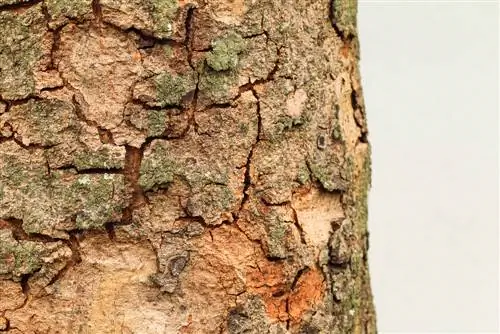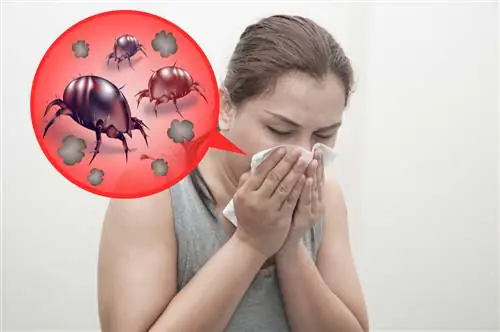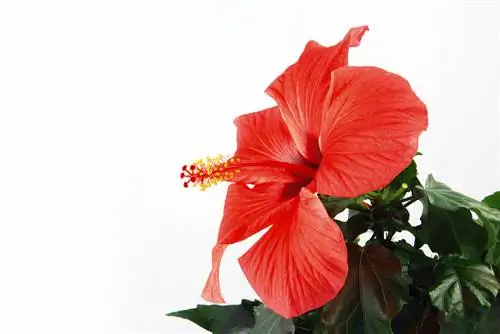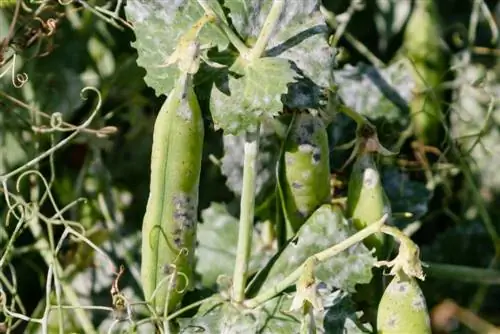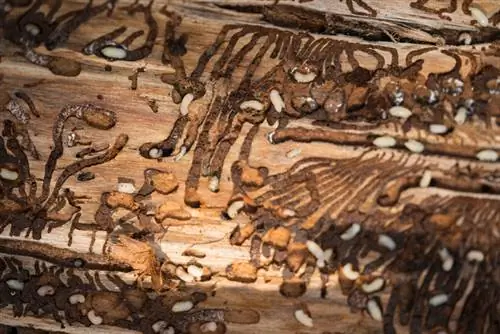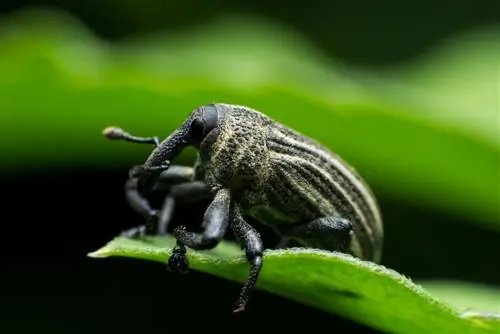- Author admin [email protected].
- Public 2024-01-05 20:48.
- Last modified 2025-01-23 11:21.
Although the ash tree has adapted to numerous environmental influences such as dry periods or persistent frost, it is still very susceptible to pest infestation. Not only the dreaded ash shoot dieback but also parasites and beetles cause serious damage to the deciduous tree, which is of great importance for forestry. But these pests are also a nuisance in your own garden and should be combated as quickly as possible after detection. This article shows how you can recognize an infestation, what type of pest it is and how you can deal with the unwanted guests.
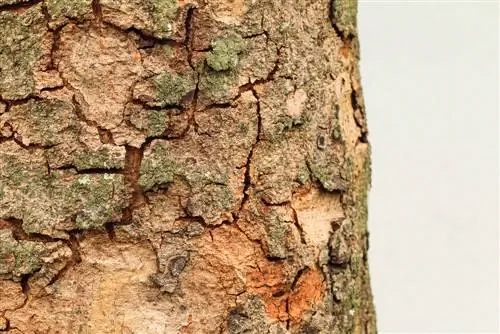
What pests attack ash trees and how can you combat them?
Common pests on ash trees are the ash beetle, the ash onion moth, the ash gall mite, the ash leaf sucker, aphids and the ash weevil. In the event of an infestation, removing infected shoots, biological pesticides or, in extreme cases, chemical fungicides can help.
Common pests of ash trees
- the ash beetle
- the ash weasel moth
- the ash gall mite
- the ash leaf sucker
- Aphids
- the ash weevil
The ash beetle
The ash beetle, which is approximately 3 mm in size, nests in the bark of young or weakened deciduous trees and eats its way through the wood. Starting in the crown, its tunnels later extend through the trunk of the ash tree, so that it gradually dies. The pest is particularly active between March and May.
The ash weasel moth
The ash weasel moth only attacks the ash tree. The first generation, which you can recognize by the pitting of the leaves, is followed by a second generation that also bores into the terminal buds. There is little danger to the he alth of the ash tree, but an infestation reduces the value of the wood because it leads to a crooked growth habit.
The ash gall miteDo you enjoy the flowers of your ash tree or are you even hoping to get seeds to propagate the tree? In this case, you should act quickly if you notice initially green, later brown growths on the branches of your tree. The ash gall mite does not cause the ash tree to die, but it does cause distorted inflorescences and a lower seed yield.
The ash leaf sucker
Similar growths to those of the ash gall mite also form when the ash psyllid is infested. However, the symptoms appear on the leaves.
Aphids
Aphids also cause leaf distortion.
The ash weevil
Holy leaves indicate the ash weevil. This is a grey-brown pest that lays its eggs on the underside of leaves in spring.
Note: Pests such as the ash beetle or the false white stem beetle are not yet widespread in Europe, but are threatening to get closer and closer. Their occurrence would have massive consequences for the forestry industry.
Treatment
- be sure to remove all infected shoots
- complete pruning may be necessary
- Treat your ash tree with biological pesticides
- Use chemical fungicides only in extreme emergencies
- find out about the seasons in which pests are more common
- check your ash tree regularly for symptoms

